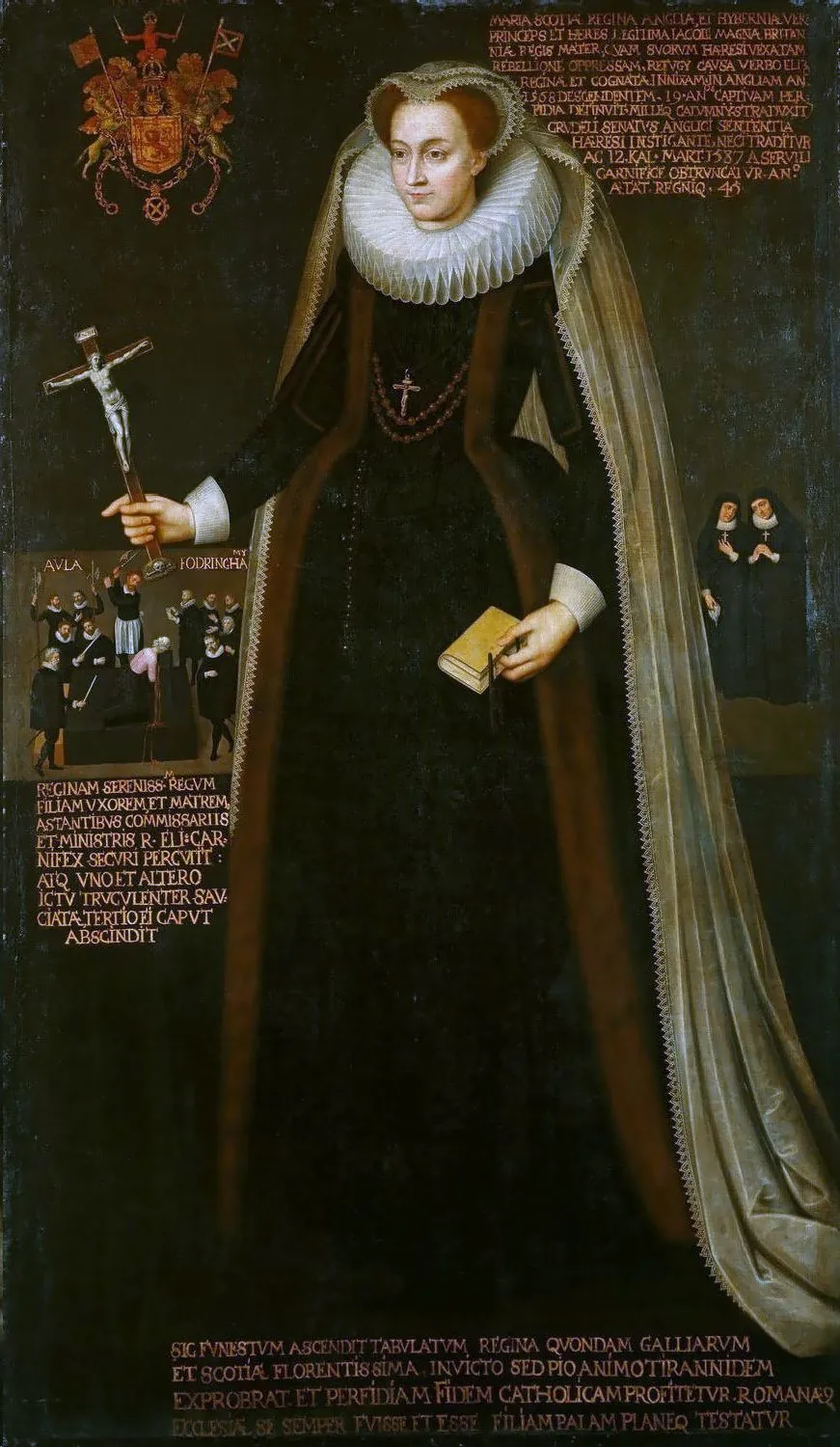Theft of Mary Queen of Scots’ Rosary a ‘Tragic Loss’ for Catholic History
Mary, Queen of Scots, also known as Mary Stuart, carried the rosary beads to her execution at Fotheringhay Castle in Northamptonshire on Feb. 8, 1587.

WEST SUSSEX, England — The theft of the gold rosary that Mary, Queen of Scots took to her execution is a “very tragic loss” for Catholic history, a curator has said.
Jan Graffius, the curator of the Stonyhurst Collections, made the comment after police reported that thieves broke into Arundel Castle in West Sussex, southern England, on May 21, stealing the rosary and other items worth more than $1.4 million.
“This is a very tragic loss for history, and specifically for Catholic history,” she told CNA.
“I heartily wish that the stolen artifacts are speedily reunited with their rightful owner, whose family has faithfully cared for them over so many centuries.”
Devastating news from Arundel Castle. The utterly priceless rosary of Mary Queen of Scots has been stolen. After her execution these personal effects were sent to the Duke of Norfolk, Britain's leading Catholic, whose descendants have kept it, until now. pic.twitter.com/58dQ74aVC5
Mary, Queen of Scots, also known as Mary Stuart, carried the rosary beads to her execution at Fotheringhay Castle in Northamptonshire on Feb. 8, 1587.
Viewed as the legitimate sovereign by many English Catholics, she was effectively imprisoned by her cousin, Elizabeth I, for 18 years before her execution for alleged involvement in a plot to assassinate the Protestant monarch.
Mary spent her final hours in prayer and her last words were “In manus tuas, Domine, commendo spiritum meum” (“Into thy hands, O Lord, I commend my spirit.”) Her executioner failed to behead her on his first attempt, requiring three strikes of an ax before he succeeded.
Sussex Police said May 23 that the castle’s staff became aware of intruders at 10:30 p.m. local time last Friday after a burglar alarm went off.
Police officers arrived within minutes, but the thieves escaped with treasures including the rosary beads.
“The rosary is of little intrinsic value as metal, but as [a] piece of the Howard family history and the nation’s heritage it is irreplaceable,” Sussex Police said.
For more than 400 years, Arundel Castle has served as the seat of the Duke of Norfolk, historically regarded as England’s premier lay Catholic.
Thieves targeted a display cabinet along the route passed by members of the public visiting the castle. In addition to the rosary beads, they took several cups commemorating royal coronations, and other gold and silver items.
A spokesman for Arundel Castle’s trustees said: “The stolen items have significant monetary value, but as unique artifacts of the Duke of Norfolk’s collection have immeasurably greater and priceless historical importance.”
“We therefore urge anyone with information to come forward to the police to assist them in returning these treasures back where they belong.”
Police said they were examining a 4x4 vehicle found abandoned and ablaze in the nearby village of Barlavington to see if it was linked to the robbery.
Detective Constable Molly O’Malley, of Chichester CID (Criminal Investigation Department), said that the castle had only reopened to visitors on May 18 after closing during a nationwide coronavirus lockdown.
O’Malley appealed to potential witnesses to report suspicious behavior in the days before the theft as well as anyone seeking to sell the stolen items.
As the curator of the Stonyhurst Collections, Jan Graffius oversees a vast assembly of Catholic martyrs’ relics at Stonyhurst College in Lancashire, northwest England.
“The real value of items like Mary Stuart’s rosary cannot be measured in financial terms,” she said.
- Keywords:
- rosary
- mary queen of scots
- theft














